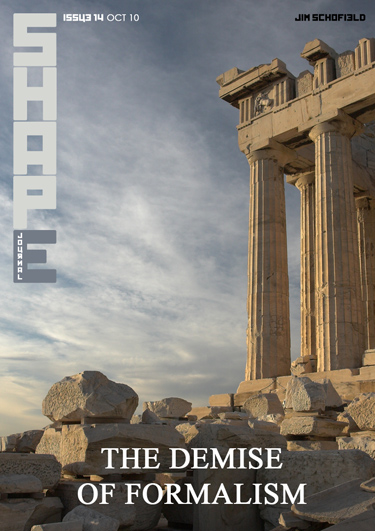
The resplendent graphics along with the tables and graphs of Keith Bennett’s article in New Scientist (2782) promise a major revision of Darwin’s Natural Selection, and as that had been written as The Origin of Species 150 years ago, and as much has been discovered since then, you would certainly expect that many major additions and improvements, not to mention substantial revisions would have been discovered by now.
But Darwin’s Theory is hard to dismiss, not least because it is that rare yet essential factor in Science – a truly holistic theory. Instead of a straight forward encapsulation of carefully measured data into a deterministic equation, we have a set of ideas which explained how evolution happened – one you might call a real scientific theory as distinct from a merely abstracted relation. So, as someone involved in closely associated researches (The Theory of Emergence), I looked forward to more evidence to add to a raft of recent quality contributions (in the magazine), which certainly are pointing the way to important updates in Darwin’s Theory.
Yet, though this is a relatively short article, the first two thirds is concerned with his own and others current investigations (mostly on the fairly recent geological past in the glaciations and interglacials of the late Quaternary). His problem was that these dramatic and large-scale changes in the environment did not have the effects on Evolution, which Natural Selection would seem to infer. Yet, though these findings were certainly interesting, and correctly demand more than pure Natural Selection as the active processes involved, his extractions are, perhaps surprisingly, rewarded with the by now usual formal answers to all things inexplicable – Chaos!
Evidence of the impossibility of predicting (a key word in that view of Science) the future in Evolution, about which he is certainly correct, makes him proffer Non Linear Chaos as the engine for real, qualitative Change. He doesn’t deny the natural selection pressures on the phenotypes of individual organisms and hence on the genetic make up of those who will dominate the gene pool. But, he clearly promotes unpredictable changes as his primary factors in Evolution.
Now many would perhaps reply to such a position by saying that Random Mutations with totally unpredictable outcomes may be of themselves sufficient to deliver the same unpredictability. But, the irresistible momentum of current ideas on Chaos and Fractals at the present time seduces Bennett into making formal (mathematical) features as being those of central importance.
Now, the making of such choices are not unimportant. First, it does not remove Evolution from our usual ideas of determinism, it just makes the “disembodied drivers” non linear.
I’m afraid that is an easy get out!
Quoting the profound contributions of Stephen Jay Gould in Interrupted Evolution will not add credibility to Bennett’s thesis. Gould and others have stated that Evolution definitely occurs in rapid bursts, and not merely via the accumulation of small incremental changes until some threshold is passed, and a wholly new species is born.
Putting that down to Chaos is certainly not a progressive improvement, but a retrenchment compared with where Gould was heading.
It is, of course, the return to the ancient and ubiquitous, idealist strand in Science, which always wants to reveal “laws” – disembodied, formal relations, which “drive” Reality. The cosy home of Chaos and Fractals involves no new thinking at all! It is merely the latest answer to the ever-increasing evidence that a solely deterministic world is a simplifying myth. For, in this kind of mathematics, we have the marriage of formal deterministic equations (the absolutely essential ingredient in this kind of Science)) and unpredictability, which is increasingly evident in many aspects of Reality.
But Form is NOT Content!
It is only how we describe the patterns of things.
It is certainly NOT how we either understand or explain things.
I’m afraid this sound and indeed vital evidence is misunderstood, and matched to formal patterns in lieu of proper scientific explanations.
No, for all this evidence can indeed be accommodated, if we concede incremental change accumulation on a minor scale, but not leading to major redirections and true qualitative change. Indeed, what precipitates the latter is not progressive accumulation at all, but what Gould correctly saw as its very opposite. Major changes occur in relative rapid episodes termed Emergences, which are initially catastrophes for the prevailing status quo. They are the actual result of accumulation, but NOT of changes towards some “next stage”. They are the ever-present deleterious contributions, which have been recognised for very many years as the basis for the ubiquitous Second Law of Thermodynamics, which start by undermining the current stability, until they finally precipitate its wholesale dismantling. The New is NOT, as such, present within the content of the Old, “growing and ready to flower given a last push”. It is, on the contrary, wholly absent from any situation prior to an Emergence. The actual creation of the New can only occur in the aftermath of an avalanche of destructive change (like a Phoenix arising from the Flames), for such a cataclysm removes the processes, which ensured the stability of the prior Level.
All the evidence Bennett quotes is wholly consistent with such a trajectory of real qualitative change, To mix up micro (non revolutionary) changes with the real engine of Evolution is indeed a mistake, and to join the increasing chorus of applause for Chaos solves absolutely nothing.

